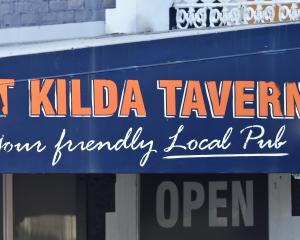The latest upgrade was driven by lower fuel prices, yield growth, rising demand and cost control.
''The dramatic decline in fuel prices over the past year amounts to a significant saving in the biggest cost-line item for most airlines. At AIR (stockmarket code for Air New Zealand), with historic hedging rolling off, we estimate it has benefited by more than $100 million during the second half of the 2015 financial year from lower fuel prices relative to the same period last year.''
Further benefits would arise in the 2016 financial year. Given the global fuel supply and demand dynamics, Mr Rooney remained confident lower prices would continue.
Investing in Air New Zealand was more about timing than taking a long-term view.
The airline industry generated consistently low and often volatile returns.
While Air New Zealand was no exception, it had a better track record than most of its international peers, he said.
Air New Zealand said in a market update it expected annual earnings to rise as much as 60%, with benign trading conditions continuing into the second half of the year.
The airline forecast normalised before-tax earnings of between $520 million and $530 million in the 12 months ending June 30, up from $332 million a year earlier.
The guidance excluded equity earnings from its stake in ASX-listed Virgin Australia, which dragged on the airline's bottom line in the first half of the financial year.
''The strong earnings momentum has continued in the second half of the year. The board has reviewed the 2016 financial plan and, given current known circumstances, the company continues to target earnings growth for the coming year.''
Air New Zealand's first-half result was bolstered by increased passenger numbers and lower fuel costs, something that was carried on into the rest of the financial year.
The airline said passenger numbers were up 4.2% at almost 13 million in the year ended May 31.
Mr Rooney said global airlines were generating more profits and higher returns than they had ever done and Air New Zealand was no different.
Forsyth Barr's 2016 profit-before-tax forecast was more than double the pre-global financial crisis peak in 2008.
Higher profits meant a greater propensity to expand services either on existing or new routes.
Recent announcements from Qantas and Jetstar reflected improving profitability on key Air New Zealand sectors.
Greater utilisation or redeployment or existing aircraft offered capacity expansion where profit opportunities were optimal, he said.
''Increased capacity means lower fares either from the need to stimulate demand or from rising competition.''
Increased capacity had been a function in 2015 and lower fares would be the function in 2016 and beyond.
Air New Zealand was likely to invest in capacity to protect its strong domestic regional franchises as Jetstar entered the market, Mr Rooney said.
*The upbeat forecast came as the national carrier faces heightened competition on domestic routes, with Qantas Airways subsidiary Jetstar unveiling plans to expand into at least four regional destinations later this year.
Air New Zealand said it would not be undercut on prices on the regional routes and was ''ready for the battle''.












